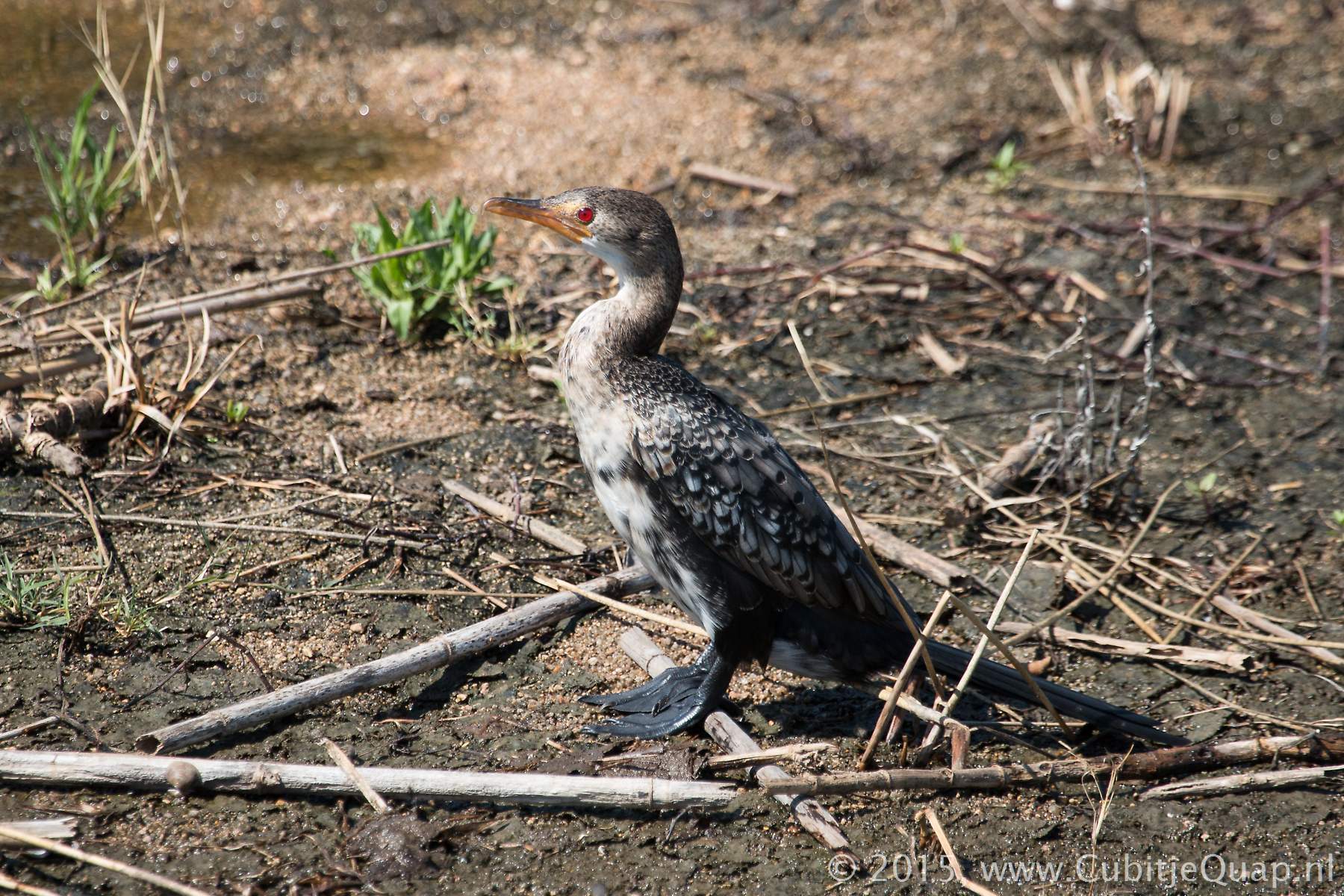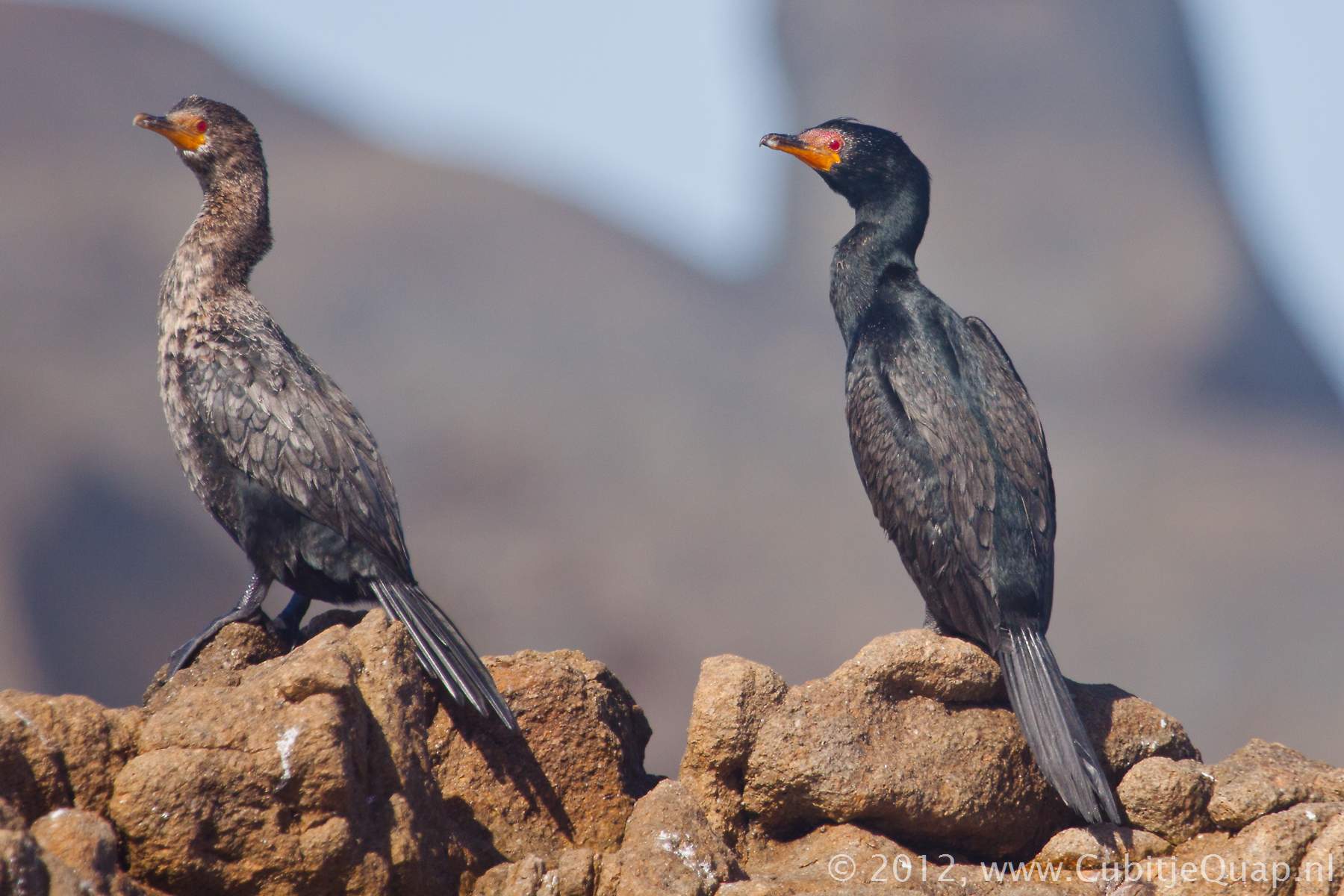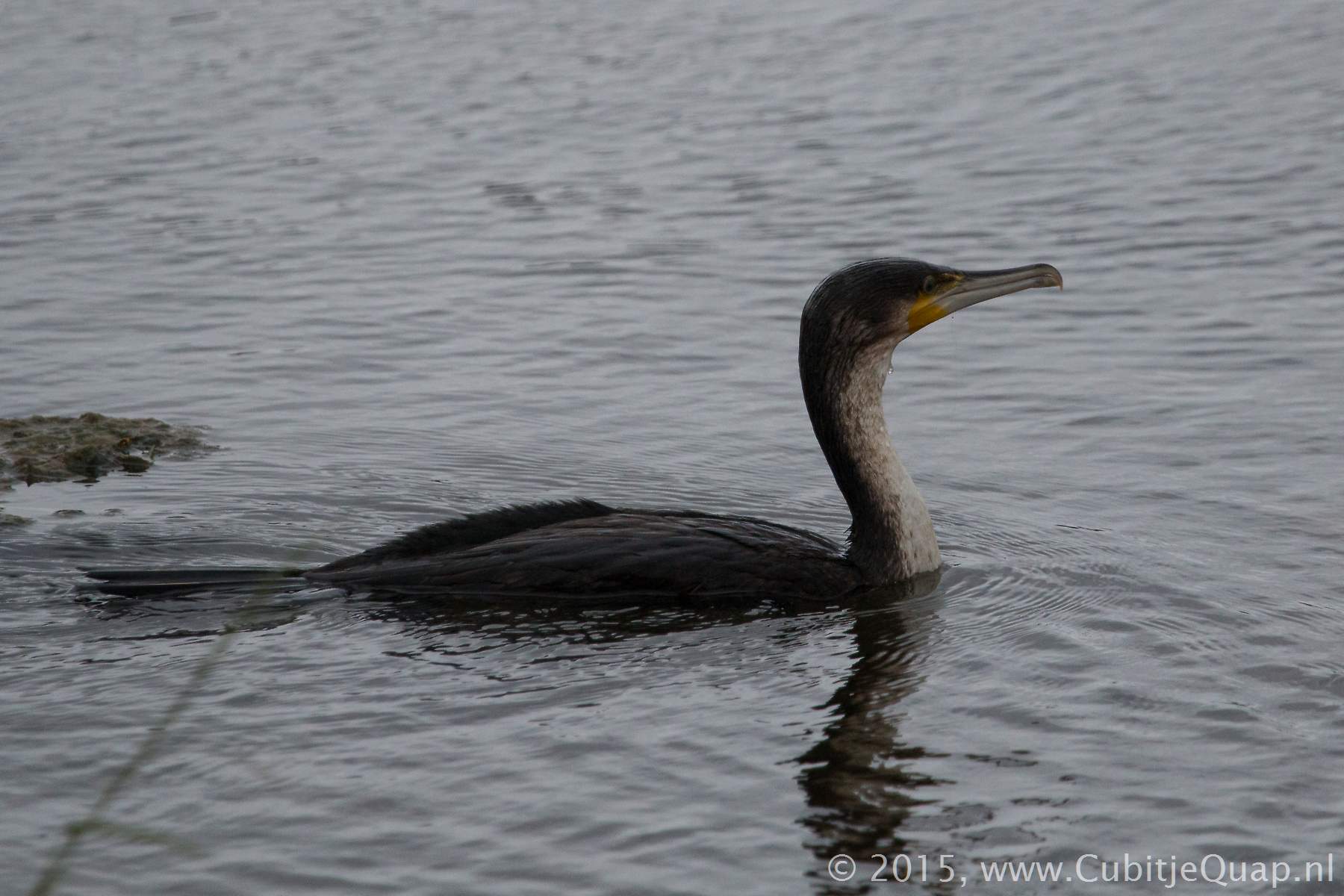Cormorants Information page
Description
Fairly small to large, gregarious, mostly fish-eating waterbirds. Their feet have webbing between all four toes. They have short powerfull legs which are set far back for diving. They walk awkwardly on land. Both sexes look alike, but males are larger. The facial skin and legs and feet change colour when breeding. The bill is long, thin and hooked.They hunt for fish by pursuit-diving, propelling themselves with their legs, dives may last up to 80 seconds in larger subspecies, but generally dives are less than 1 minute. They have relatively short wings due to their need for economical movement underwater, and consequently have the highest flight costs of any flying bird. After fishing, cormorants go ashore, and are frequently seen holding their wings out in the sun.
They often fly in formation, with necks stretched, constantly flapping their wings. Most species land on their belly, braking with depressed tail.
They form nests of a mound of sticks, reed, seaweed or other plant debris on flat ground, rocks, boulders, trees, guano platforms, shipwrecks etc. Clutch is usually 3 - 4 eggs, pale blue or green with chalky white surface. Incubation (placing their feet over the egg) and care of young is done by both sexes.
Scientific names
Microcarbo = small cormorantPhalacrocorax = a cormorant
Birds in this category
Interesting links
Wikipediafatbirder.com



